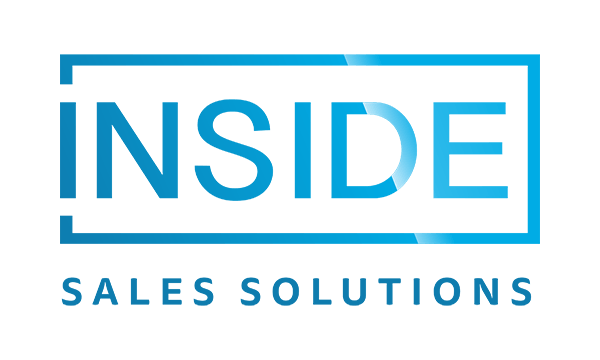To build a winning sales team, you have to do more than hire the right people. You also have to make sure they’re organized in the best way possible to meet your sales goals.
There are several sales organization structures that you could use for your team, but a few stand out for their ability to better support B2B technology sales. Picking the right one for your company can help you generate more leads and increase revenue over time.
Here are three ways you can organize a team that’s optimized for B2B tech sales success.
Get the Ultimate Guide to Maximizing Channel Sales
#1 The Assembly Line
Even your best sales rep isn’t an expert in every area of sales. The Assembly Line is a sales organization structure that takes advantage of your team’s strengths and focuses on specialization.
This team structure separates the sales process into individual roles. Each rep will have a role falling in one of these areas:
- Sales development—prospecting for leads and nurturing MQLs to effectively develop the sales pipeline
- Account executive—taking sales opportunities from the MQL stage and turning them into closed-win deals
- Account managers—onboarding customers and maintaining relationships throughout the customer experience
With this type of organization, you have a highly productive sales team composed of individuals efficient in their roles. The Assembly Line is best for sales teams with highly specific KPIs in areas like lead generation or customer retention. It’s easiest to set and monitor these goals when the same group of individuals handle these responsibilities for the team.
Pros
The Assembly Line expedites the customer journey, shortening the time from prospecting to sales and post-sales support. This brings new revenue to the organization more quickly, which is certainly a benefit that leadership teams will appreciate.
With the sales reps so heavily segmented, it’s also easier to see where the team needs to improve and look for opportunities to outsource work to specialists. For example, this structure can reveal if the team struggles with high-volume lead generation, which is critical to B2B sales due to a longer sales cycle. You could then outsource sales development and redistribute your team to scale up the account executive and account manager workload.
Cons
With multiple reps touching each lead and account, the Assembly Line can lead to miscommunication within the sales team. This structure makes it imperative for each person to carefully document their interactions with leads and customers so that the next person interacting with them can understand what’s happened previously.
This structure can also cause friction within the customer journey. Leads and even customers may experience inconsistencies in their communication with your team, and it may also be difficult for them to build rapport with the company.

#2 The Island
The Island is the opposite sales organization structure to the Assembly Line. With this structure, each sales rep is a swiss army knife equipped to handle every stage of the customer journey. From lead gen to customer relationship management, the sales rep is the designated person that each potential and existing customer works with.
The Island is best for small sales teams that have a limited ability to bring on more resources. These teams often need to get the most output from each member, which this structure works well when compared to the others on the list.
Pros
Using this structure allows your investment in existing and new team members to go further. You’re able to cover the entire customer journey with one individual and can bring on generalists as opposed to several specialists.
Bigger companies can also struggle with information silos where someone specialized in a specified role retains the processes needed to do the work. If that person leaves, there can be a gap left in fulfilling that role until someone new is hired. With the Island, it’s less likely that personnel changes will hinder team operations.
Cons
The largest con with this sales organization structure is its difficulty to scale. A single sales rep is only capable of managing so many accounts since they’re responsible for every aspect of the sales cycle. Often the only way to significantly ramp up team output is to bring on new hires.
The lack of specialization with the Island can also be a long-term issue. Everyone has their strengths and weaknesses, and one person’s weakness could cause the company to lose significant business. For example, if someone on the team is better at closing deals than sourcing leads, they’ll struggle to meet any lead generation targets that you set.

#3 The Pod
If the Assembly Line and the Island seem too polarizing, the Pod is a nice balance between the two.
In this structure, the sales team is organized into groups or pods. Within each pod, there are individuals responsible for the separate sales development, account executive, and account manager sales functions.
Pods work together to support the same prospects, leads, and customers throughout the customer journey. While sales reps still have specialized functions where they’re highly efficient, they also communicate more effectively than they would in the Assembly Line structure.
This structure works well for organizations looking to measure and improve several sales metrics at once, especially if the organization is larger and pods are organized around regions or territories.
Pros
The Pod is the most scalable sales organization structure of the three. Because pods function as teams, they’re able to increase output as needed by rebalancing workloads among the group.
The structure also benefits from an expedited sales cycle similar to the Assembly Line, but without the overwhelm that a do-it-all sales rep in the Island might experience.
Cons
Even though this structure may seem like the best of both worlds, it brings its challenges. The success of the group can sometimes make it difficult to notice sales reps who are underperforming in their responsibilities. Although personal development and check-ins are a key part of any sales department, they’re especially important with this structure to make sure everyone is pulling their weight.
Choosing the Right Sales Organization Structure for Your Team
The Assembly Line, the Island, and the Pod all have their pros and cons. No one structure is inherently better than the other, and the right one for your organization depends on many factors.
To decide the right one, consider the size of your sales team, your immediate and long-term goals, and the strengths and weaknesses of your sales reps. Also, think about whether there are areas of the sales cycle such as sales development that you could outsource to achieve your sale’s team’s KPIs more effectively.
Considering all of these factors will help you determine the best sales organization structure for your current team and what changes you may need to make to the roles that make up your team in the future.
Considering Outsourced Sales Development?
Don't make your decision until you read our guide to creating a successful partnership for growth.



